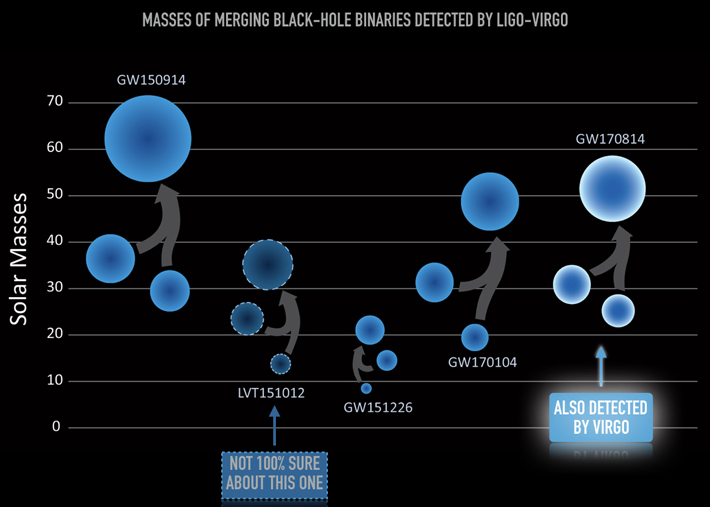Gravitational waves shake the world
The 2017 Nobel Prize in Physics has been awarded to Rai Weiss, Barry Barish and Kip Thorne for their pioneering role in the detection of gravitational waves by LIGO.
The world was indeed shaken in September 14, 2015 when a burst of gravitational waves, generated about 1,300,000,000 light years away and ago, by the inspiral and merger of two black holes. When these waves, whose generation and propagation followed the predictions of Einstein's theory of general relativity, finally reached the Earth, their intensity had dropped to such an extent that they shook the LIGO detectors in Hanford (WA) and Livingston (LA) by a mere 1 part in 1021.

Stephen Hawking and other members of the Cambridge Relativity group watch the Nobel Prize announcement. Professor Hawking has a longstanding academic link with Kip Thorne going back to the 1970s, and frequently visits him at Caltech. (Photo: Tobias Baldauf)
More precisely, the arms of the two LIGO detectors, each 4 km long, oscillated in length by a tiny fraction of an atomic nucleus.
The measurement of such a miniscule effect was possible only through the use of the latest technology in laser interferometry.
The gigantic effort to build these most sensitive machines ever, starting decades ago and continuing throughout the years to reach ever higher sensitivity, was pioneered by Weiss, Barish and Thorne, together with the late Ronald Drever.
CTC researchers Ulrich Sperhake, Michalis Agathos, Nathan Johnson-McDaniel and Christopher Moore are members of the LIGO collaboration. The CTC also has an active involvement in the development of the GRChombo numerical relativity code that is being used to generate template waveforms for the detection and classification of gravitational wave events.
The first gravitational event, dubbed GW150914, was followed by three further black-hole merger events GW151226, GW170104 and GW170814, the last one of which received additional confirmation by being observed also with the European Virgo detector located near Pisa in Italy.
This momentous discovery provides scientists with a qualitatively new way to explore the Universe. From the equation of state of supranuclear matter in neutron stars to the echoes generated in the early Universe, there are many questions we now hope to answer by listening to the Cosmos's gravitational wave symphony.
LIGO (Laser Interferometer Gravitational-wave Observatory):
Official Nobel Prize statement:
https://www.nobelprize.org/nobel_prizes/physics/laureates/2017/press.html

Credit: LSC/Sonoma State University/Aurore Simonnet
